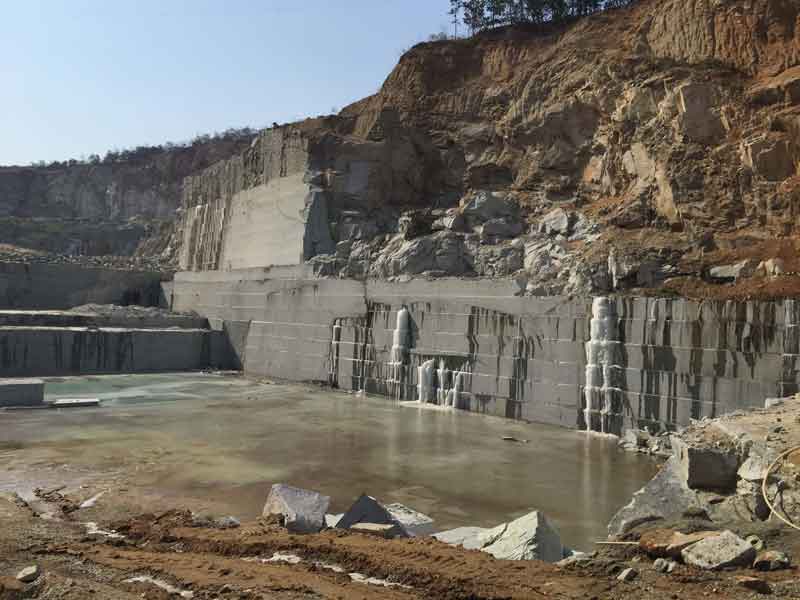Travelling Via Granite Quarries in South Africa: A Visual Odyssey
Travelling Via Granite Quarries in South Africa: A Visual Odyssey
Blog Article
Uncovering the Rich History and Sustainable Practices of Granite Quarrying
As we base on the precipice of uncovering the intricate tapestry of granite quarrying, a trip via time exposes not just the physical act of removing rock yet likewise the cultural and historical relevance woven into the very fabric of this technique. From the ancient beginnings that laid the foundation for contemporary quarrying techniques to the lasting practices that are forming the future of this industry, each carve mark on granite surface areas tells a tale waiting to be uncovered (granite quarries in south africa). The legacy of granite quarrying extends far past mere removal; it is a testimony to human ingenuity, strength, and the long-lasting attraction of this marvelous rock
Ancient Beginnings of Granite Quarrying
Going back to ancient civilizations, the technique of quarrying granite has been an integral part of human background and building improvement. The earliest proof of granite quarrying go back to old Egypt, where substantial pyramids and complex sculptures were crafted from this resilient rock. The Egyptians used primitive devices to remove granite blocks from quarries, showcasing the importance of this material in their huge building and constructions.
Progressing in background, the Greeks also made considerable contributions to the quarrying of granite. The Greeks used granite in various building wonders, such as holy places and statuaries, showing their skill in shaping and sculpting this sturdy stone. The Romans better refined the methods of quarrying granite, utilizing innovative devices like chisels and hammers to extract and shape granite for their renowned frameworks.
Via the centuries, the method of quarrying granite has evolved, with modern-day innovations boosting efficiency while preserving the timeless appeal of this all-natural rock - granite quarries in south africa. From ancient civilizations to modern builders, the legacy of granite quarrying remains to form our world
Advancement of Quarrying Techniques
The evolution of quarrying methods has been marked by a continual progression in the direction of higher effectiveness and precision in extracting granite. Early quarrying strategies involved manual labor with standard devices such as chisels, hammers, and wedges to remove granite blocks from the earth.
In even more recent times, the arrival of machinery reinvented the quarrying sector, allowing much faster removal prices and raised performance. Technologies such as ruby cord saws, high-pressure water jets, and pneumatic drills have actually become standard in contemporary quarries, permitting specific cutting and minimized waste. Advancements in computer-controlled tools and 3D modeling have maximized quarrying procedures, leading to marginal environmental effect and improved sustainability practices. As the demand for granite continues to rise, the development of quarrying methods stays integral to meeting market requires efficiently and sustainably.
Cultural Significance of Granite
Granite holds an extensive social significance throughout numerous worlds due to its enduring visibility in building masterpieces and admired monoliths. From the stunning pyramids of Egypt to the intricate granite quarries in south africa makings of the Angkor Wat temple in Cambodia, granite has been a material of choice for sharing splendour and durability in social heritage. In Visit This Link old Rome, granite columns decorated temples and public structures, representing stamina and durability. The social significance of granite prolongs past its physical attributes; it personifies durability, stability, and eternity, making it a sign of enduring traditions and practices.

Sustainable Practices in Quarrying
In the middle of the rich history of granite quarrying and its cultural relevance lies a growing emphasis on sustainable methods within the sector. As environmental awareness and worries concerning source exhaustion have enhanced worldwide, the quarrying field has progressively accepted sustainable techniques to minimize its effect on the atmosphere and surrounding neighborhoods.

Moreover, reclamation and recovery of quarry websites post-extraction are essential to lasting find more info practices. By restoring quarried locations to a natural or advantageous state, such as producing wildlife habitats or leisure spaces, quarriers can balance out the environmental impact of their procedures and add positively to the neighborhood environment.
Tradition of Granite Quarrying
With a historic backdrop steeped in craftsmanship and industrial progress, what enduring effect has granite quarrying left on the landscape of modern culture? The heritage of granite quarrying transcends plain removal techniques; it has actually formed architectural marvels, metropolitan landscapes, and cultural heritage worldwide. The long lasting nature of granite has actually made it a recommended selection for monoliths, buildings, and facilities, standing as a testimony to the skill and artistry of quarry workers across generations.
In addition, the economic footprint of granite quarrying can not be neglected. The industry proceeds to provide job opportunity and drive regional economic climates in regions where granite extraction prevails. It has actually additionally stimulated technological innovations in quarrying strategies and equipment, leading to more reliable and lasting practices.
In terms of sustainability, the heritage of granite quarrying consists of initiatives to minimize environmental impacts via reclamation tasks and accountable source administration. By stabilizing financial passions with environmental stewardship, the sector makes every effort to make certain that future generations can continue to benefit from this enduring all-natural resource.
Conclusion

Report this page